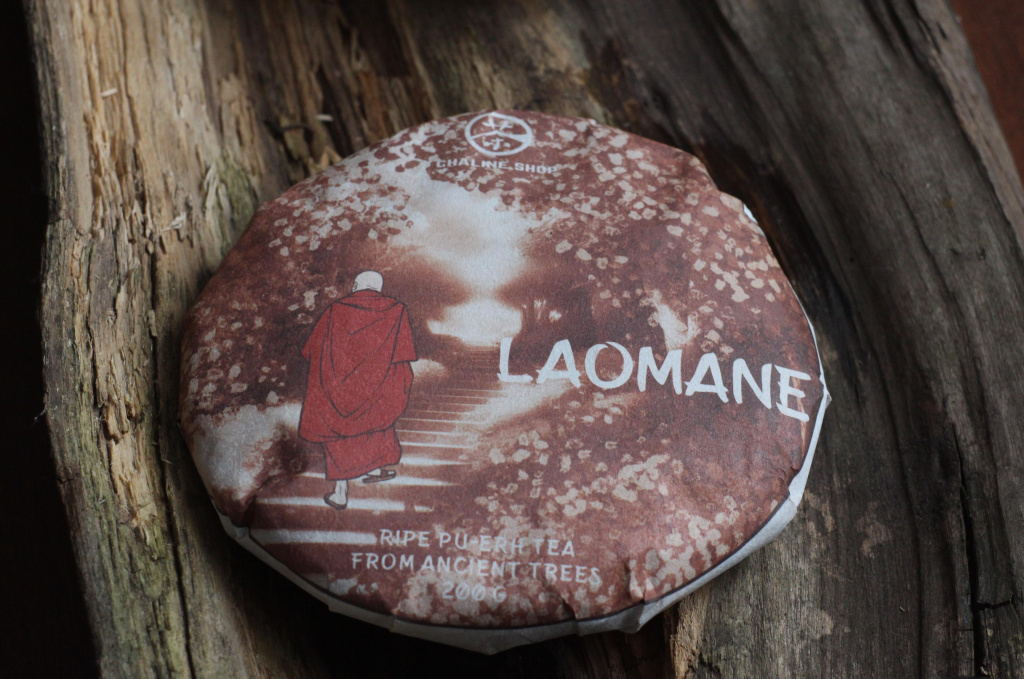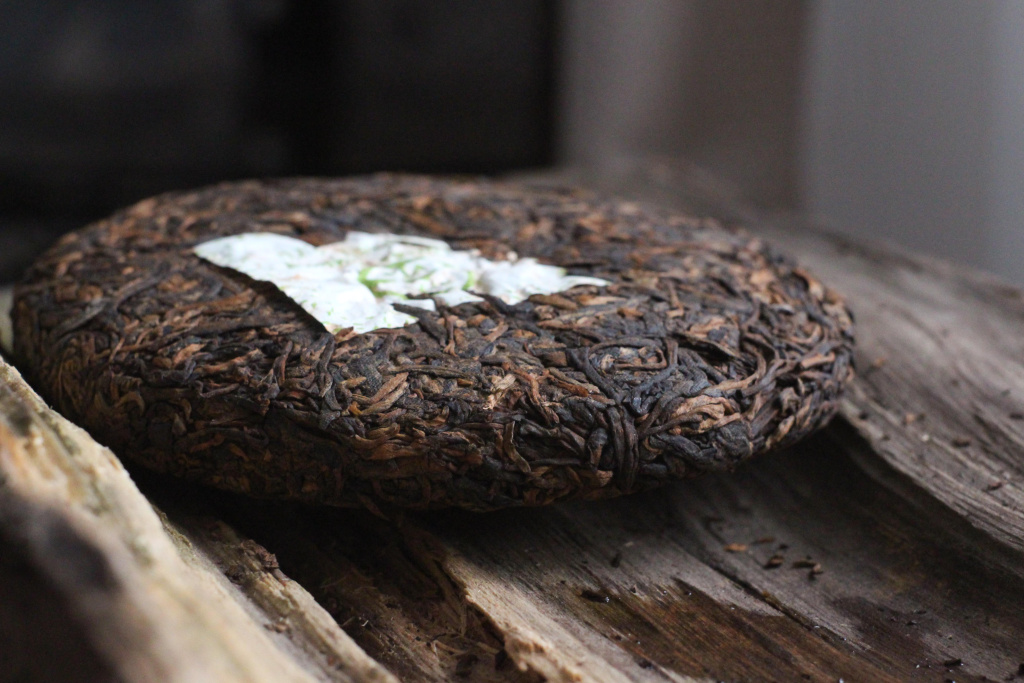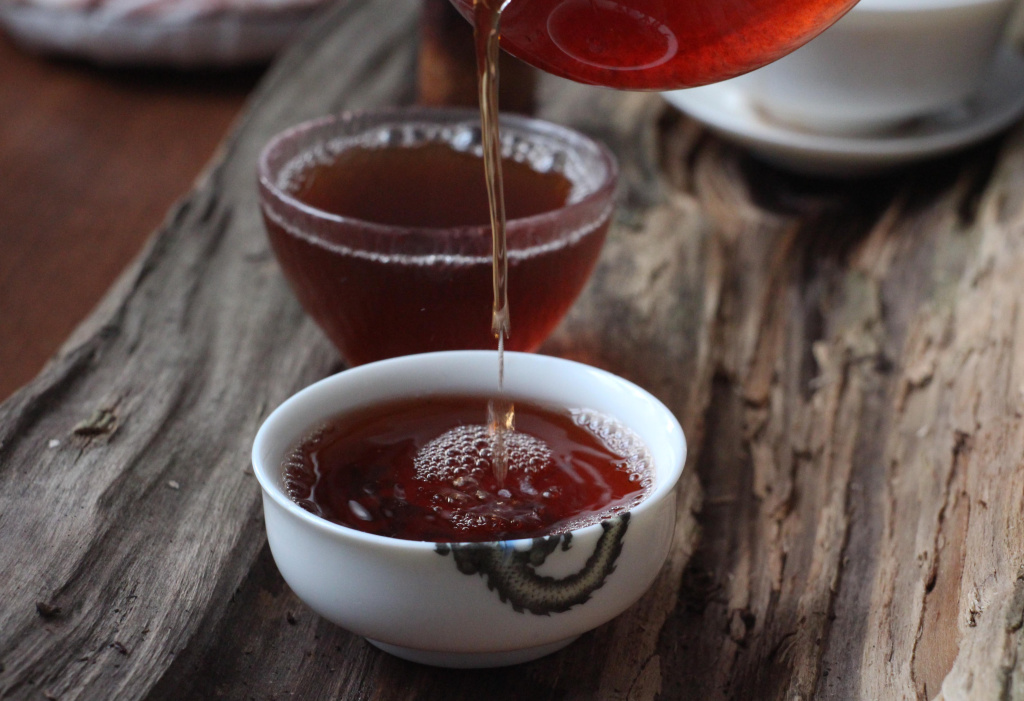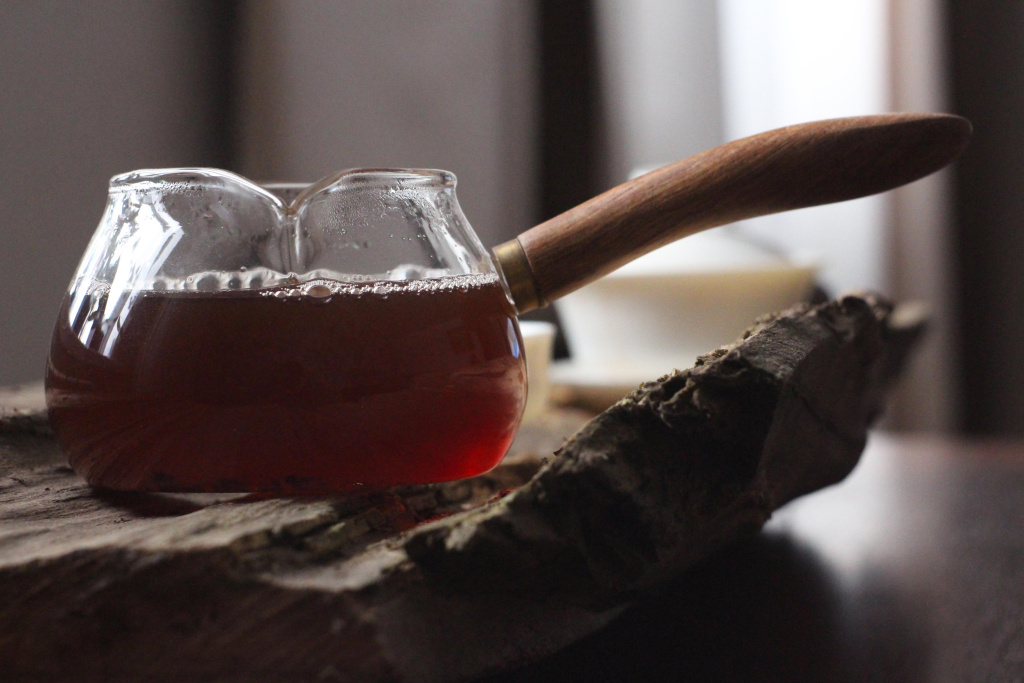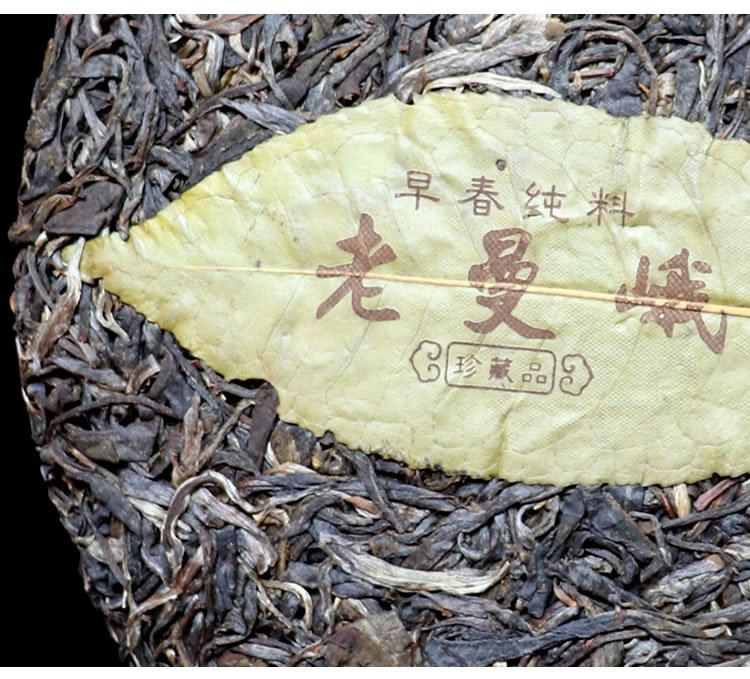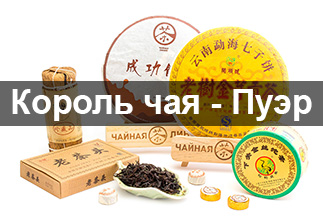How did it all begin? We bought a batch of sheng pu'er collected from old tea trees (300 to 500 years old) in the Laoman'e village area, which was processed by master Yan Wenjiao (Chinese: 岩温叫, pinyin: yán wēnjiào).
Next, we took this Sheng to a small private plant where fermentation is professionally carried out in small-volume baskets. Fermentation was performed by master Zhang Dechun (Chinese: 张德春, pinyin: zhāng déchūn) who has 19 years of experience behind him. Thus, we received a single-variety honest pu-erh, created entirely under our control.
Large leaves of old tea trees. The whole pancake is strewn with golden buds.
The first sip. Immediately you feel as if you are drinking sheng Puer, but it is very noble, soft and native. The taste has a bright spicy bitterness, characteristic of raw materials collected in the Laoman Mountains. The bitterness quickly gives way to fruity-berry sweetness, the aftertaste is astringent and silky. That very tea state, which is actively discussed, can only be obtained from Puer, honestly collected from old tea trees. This is a clear and distinct intoxication, clarity and energy, with the help of which you can "move mountains".
The tea infusion is transparent. Mesmerizing ruby-burgundy color.
This puer has great potential. Due to the raw materials from tea trees and the competent fermentation process, the tea changes literally every month.
Collectible item, stylish international packaging.
|
Country
|
China |
|
Habitat
|
Лао Мань Э (老曼峨, Lǎo màn é) |
|
Altitude
?
Height in meters |
1686 |
|
Manufacturer
|
Чайная Линия |
|
Pressing form
|
Bing Cha (Cake Tea) |
|
Declared weight, g
|
200 |
|
Fermentation method
|
С отрывом от земли |
|
Type of tea raw material
|
Large trees (100-300 years) |
- Комментарии
- Вконтакте
Pu-erh is one of the most unique types of tea, which only gets better with age. Many people, when they first encounter this tea, wondered: why is pu-erh more often found in pressed form (cakes, bricks, tochas), and not in loose form? The reasons for this are related to both history and the practical aspects of storing and fermenting tea. Despite modern technologies that allow the production of loose pu-erh, the shape of pressed cakes remains unchanged. And pu-erh is more often found on sale in pressed form, for example, in the form of cakes or bricks, and loose pu-erh is less common. We will talk about the reasons for pressing pu-erh into cakes in this article.
Puer is a unique Chinese tea that is distinguished by its depth of taste, complexity of aromas and versatility of aftertaste. Its taste characteristics are formed under the influence of many factors, from growing conditions to the brewing method. Let's look at the main ones.
The article "Lao Man E Old Tree Leaf Tea: History, Geography, and Features" will immerse you in the world of unique Chinese tea produced in the village of Lao Man E, located in Yunnan Province. You will learn about the geographical location of the village, its history, which dates back more than 1,300 years, and how this region became famous for producing bitter tea. The article also details the characteristics of Lao Man E tea, its taste and aroma, as well as the efforts made by the villagers to preserve ancient tea gardens and maintain the quality of the product.
Over time, some consumers who are part of the country's "tea elite" discover mainland Chinese tea. And only a few get acquainted with Taiwanese varieties. The path of a tea person is usually long and thorny, but ultimately it leads to the King of Teas - puer. But not everyone is able to go all the way from ordinary teas to puer and appreciate its qualities.
The tea ceremony occupies a special place in the centuries-old Eastern tradition. And although the essence of this phenomenon remains constant, the nature and external manifestations of the tea ceremony in different nations have their own national characteristics. In each Chinese province, the tea ceremony and the tea used in it are varied: for example, residents of the southern provinces prefer green tea, and residents of the northern provinces - red tea, in Fujian province they more often use Oolong tea, and in Yunnan province Puer tea is widely known.











